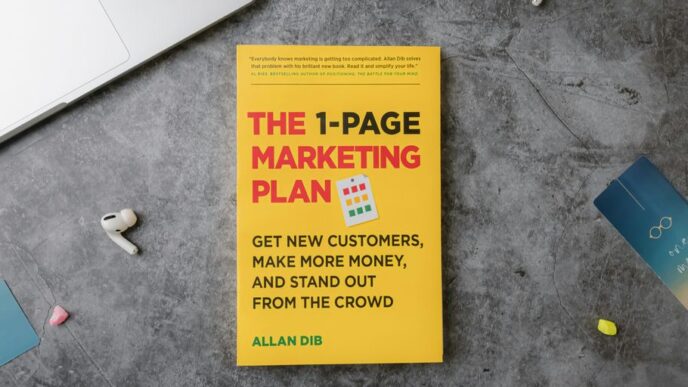As the world becomes increasingly digitized, regulatory technology (RegTech) and artificial intelligence (AI) are two buzzwords that are gaining more attention in the financial industry. But what happens What occurs when the convergence of these two technologies takes place? The answer is a powerful tool that can help companies better navigate complex regulations while improving efficiency and accuracy. In this blog post, we will explore the intersection of AI and RegTech – how they work together, their benefits, and some examples of where they have already been successful.
Introduction to Regulatory Technology and Artificial Intelligence
Regulatory technology, or “regtech,” is a term used to describe the use of technology to help companies comply with regulations. This can include everything from software that helps track regulatory changes to artificial intelligence (AI) that can be used to automate compliance tasks.
RegTech refers to a wide range of technologies and processes used by companies to meet their regulatory obligations. It encompasses everything from digital identity verification, automated compliance monitoring, and blockchain-based recordkeeping, to natural language processing (NLP) solutions for extracting data from documents. AI is the umbrella term for a variety of sophisticated algorithms used to process and analyze large amounts of data in order to complete tasks that are normally done by humans.
When RegTech and AI are combined, they can create powerful solutions that facilitate more accurate and efficient compliance management while reducing operational costs. AI can be used to monitor transactions for suspicious behavior or detect potential fraud in compliance records. It can also be used to quickly identify patterns in customer data that may indicate non-compliance issues.
This allows companies to take swift action before any violations occur. Furthermore, by leveraging the power of machine learning, AI can continually update itself with new information on the latest regulations so that it is always up-to-date with changing rules and regulations.
We have explored how RegTech and AI intersect and some of the potential benefits they provide when combined. We have also seen some examples of where they have been successful in helping companies stay compliant with ever-evolving regulations. As this intersection continues to develop and expand, it’s clear that the potential of AI-enabled RegTech solutions is only just beginning to be explored.
AI is increasingly being used in regtech solutions as it can provide a more efficient and effective way to deal with the increasing complexity of regulations. For example, AI can be used to automatically read and interpret regulatory documents, identify key requirements, and generate reports on compliance status. AI can also be used to monitor company activities for potential compliance risks and flag any issues that need to be addressed.
The use of AI in regtech is still in its early stages, but it has the potential to transform the way companies comply with regulations. By providing a more efficient and effective way to manage compliance, AI-powered regtech solutions can help companies save time and money while ensuring they remain compliant with changing regulations.
Benefits of Using AI in Regulatory Technology
There are many benefits of using artificial intelligence (AI) in regulatory technology, also known as RegTech. AI can help organizations automate the compliance process, reducing the need for manual input and increasing accuracy. Additionally, AI can help identify patterns and trends in data that may be otherwise undetectable, assisting organizations in making more informed decisions about compliance.
Organizations that implement AI-powered RegTech solutions can benefit from increased efficiency and cost savings. In addition, by leveraging the power of AI, organizations can improve their ability to manage risk and make better informed decisions about compliance.
Risks Associated with Automating Regulatory Compliance
As with any new technology, there are risks associated with automating regulatory compliance. One risk is that companies may become too reliant on the technology and not have the internal controls in place to catch errors. Another risk is that the technology may not be able to keep up with changes in regulations. There is always the possibility that hackers will find a way to exploit the system.
Finally, some companies may be tempted to use the technology to cut corners on compliance, which could result in fines or penalties if the system is not properly monitored. Automation can also potentially increase the risk of detrimental errors if not properly implemented and monitored.
Different Types of AI Used in Regulatory Technologies
When it comes to applying artificial intelligence (AI) to the world of regulatory technology (RegTech), there are a few different approaches that can be taken. Here are some of the most common types of AI used in RegTech today:
Machine Learning: Machine learning is a type of AI that allows software to learn from data and improve its performance over time. This approach is often used for tasks like fraud detection, risk management, and compliance monitoring.
Natural Language Processing: Natural language processing (NLP) is a type of AI that deals with understanding human language. This approach can be used for tasks like automatically generating reports or summarizing regulatory filings.
Predictive Analytics: Predictive analytics is a type of AI that deals with making predictions about future events based on past data. This approach is often used for tasks like identifying trends or forecasting risk.
Robotics: Robotics is a type of AI that deals with the control of robotic devices. This approach can be used for tasks like automating repetitive manual tasks or providing physical assistance to humans in regulated environments.
Computer Vision: Computer vision is a type of AI that deals with understanding visual data. This approach can be used for tasks like automatically extracting information from images or videos.
How AI is Enabling Fintech Innovation
Artificial intelligence (AI) is poised to revolutionize the financial services sector. By automating repetitive tasks and providing insights gleaned from data analytics, AI can help financial institutions reduce costs, improve customer experience, and comply with regulations.
Though AI adoption in banking has been slow, several banks have started to experiment with the technology. For example, JPMorgan Chase is using AI to automate the loan application process; Goldman Sachs is using AI to identify patterns in trading data; and Bank of America is using AI to flag potential fraudulent activity.
Fintech startups are also leveraging AI to create innovative products and services. Some examples include:
-SoFi: A personal finance platform that uses AI to provide personalized recommendations on student loan repayment and refinancing options.
–Clarity Money: A budgeting app that uses AI to track spending patterns and offer insights on how to save money.
-Betterment: An investment platform that uses AI to provide users with personalized investment advice.
As AI becomes more widely adopted in the financial sector, we can expect to see even more fintech innovation driven by this transformative technology.
These advances in AI will help create a more secure and efficient financial system. With advanced analytics, AI can detect fraudulent activity faster, thereby reducing the risk of fraud. Additionally, automated services powered by AI can improve customer experience by providing quick and accurate responses to inquiries. Finally, AI can be used to automate compliance processes, helping financial institutions stay up-to-date with the latest regulations.
How Companies are Leveraging AI for Regulatory Compliance
As the volume and complexity of data increases, so do the risks associated with regulatory compliance. To meet these challenges, many organizations are turning to artificial intelligence (AI) for help.
AI can streamline the compliance process by identifying patterns and anomalies in data that would be difficult for humans to find. It can also help create a “single source of truth” by consolidating data from multiple sources into a single platform. This can make it easier to track changes over time and ensure that all stakeholders have access to the most up-to-date information.
In addition, AI can be used to automate repetitive tasks such as report generation and data entry. This frees up employees’ time so they can focus on more strategic tasks. And, by automating these tasks, organizations can reduce the chances of errors and improve efficiency.
Organizations are also using AI to monitor employee behavior and identify potential compliance risks. For example, AI can be used to flag unusual patterns of email or internet usage that could indicate insider trading or other prohibited activities. By proactively identifying risks, organizations can take steps to mitigate them before they result in costly fines or penalties.
AI is quickly becoming a vital tool for regulatory compliance. As organizations become more reliant on data, AI will play an increasingly important role in helping them meet their compliance obligations.
Challenges of Implementing AI in RegTech
When it comes to implementing artificial intelligence (AI) in regulatory technology (RegTech), there are a number of challenges that need to be considered. First and foremost, AI is still a relatively new technology and there is a lot of uncertainty surrounding its potential applications in the RegTech space. Additionally, AI requires a significant amount of data in order to be effective. This can be a challenge for RegTech companies who may not have access to the necessary data sets. AI-based solutions can be expensive to develop and implement, which may limit their use by smaller RegTech firms.
Conclusion
As the relationship between artificial intelligence and regulatory technology continues to develop, it is clear that both have much to offer in terms of improving efficiency and effectiveness. By combining the two technologies, businesses can drive more successful operations while also ensuring compliance with relevant laws and regulations. With so many potential benefits, exploring the intersection of AI and RegTech appears to be an avenue worth pursuing for any organization looking to optimize their processes.













